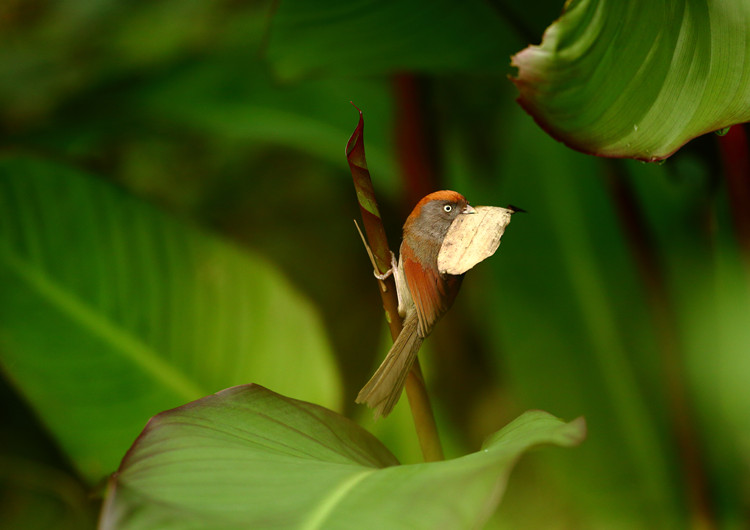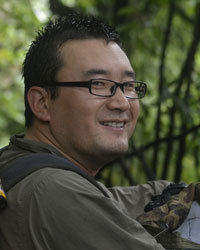
|
 An Ashy-throated Parrotbill carries a leave in its mouth in Laojunshan Natural Reserve of southwest China’s Sichuan province. Click here for more photos |
"If you are not really into nature and wildlife photography, don’t choose it as your career since you can never predict the difficulty, danger and earnings until you are out there. For those who have a true passion, I only have one thing to say: always remember why you start." -- Zuo Lingren
Q: How did you get into the field?
|
 Nature Photographer: Zuo Lingren |
A: Starting from 2006, I have been in this field for eight years now. I started with birds and so far they are still my main subjects. I am also interested in large beasts and plants. All of them appeal to me with their own charm and are more accepted among the public.
Q: What’s the biggest difficulty you faced during photographing?
A: My biggest problem is my ability to satisfactorily take photos of wildlife skillfully and distinctly. Besides, wildlife animals, especially those big mammals in our country, are rarely seen thus it's more difficult to shoot photos of them. That's a common problem for most of Chinese nature photographers.
Q: Can you recount a story that left a deep impression?
A: I would like to share the story of taking photos of snub-nosed monkeys that were discovered near the Nujiang River in Yunnan province. At 5 pm on October 28, 2013, we got news that forest rangers of Pianma Conservation Station had found a trail of snub-nosed monkeys. We rushed to Pianma from Fugong at 8:30 pm and arrived at 3:24 am the next day. A heavy rain shower, foggy weather and wet roads made our trip all the more difficult. By 10:15 am, the morning active period of the monkeys had passed. Cold, moisture and fatigue forced us to give up and go back to camp.
Suddenly, the snub-nosed monkeys popped up. Almost at the same time when I saw the monkeys and raised my camera, they also noticed me. A big male standing on a branch began to send out an alarm. The branches wobbled and countless monkeys swiftly moved down the forest. I just focused my camera on that male and pressed the shutter. With that, we obtained the very first professional and sharp images of the snub-nosed monkeys of Nujiang River in the wild. We were so excited.
At 10:35 and 28 seconds am, October 29, 2013, I took the first picture. This is a great journey and obviously a difficult one.
That experience also indicts that the integration of wildlife photography, the local reserves and research institutions can create greater effects and influence, since they are more powerful once combined.
Q: What advice can you give to those young photographers?A: If you are not really into nature and wildlife photography, don’t choose it as your career since you can never predict the difficulty, danger and earnings until you are out there. For those who have a true passion, I only have one thing to say: always remember why you start.